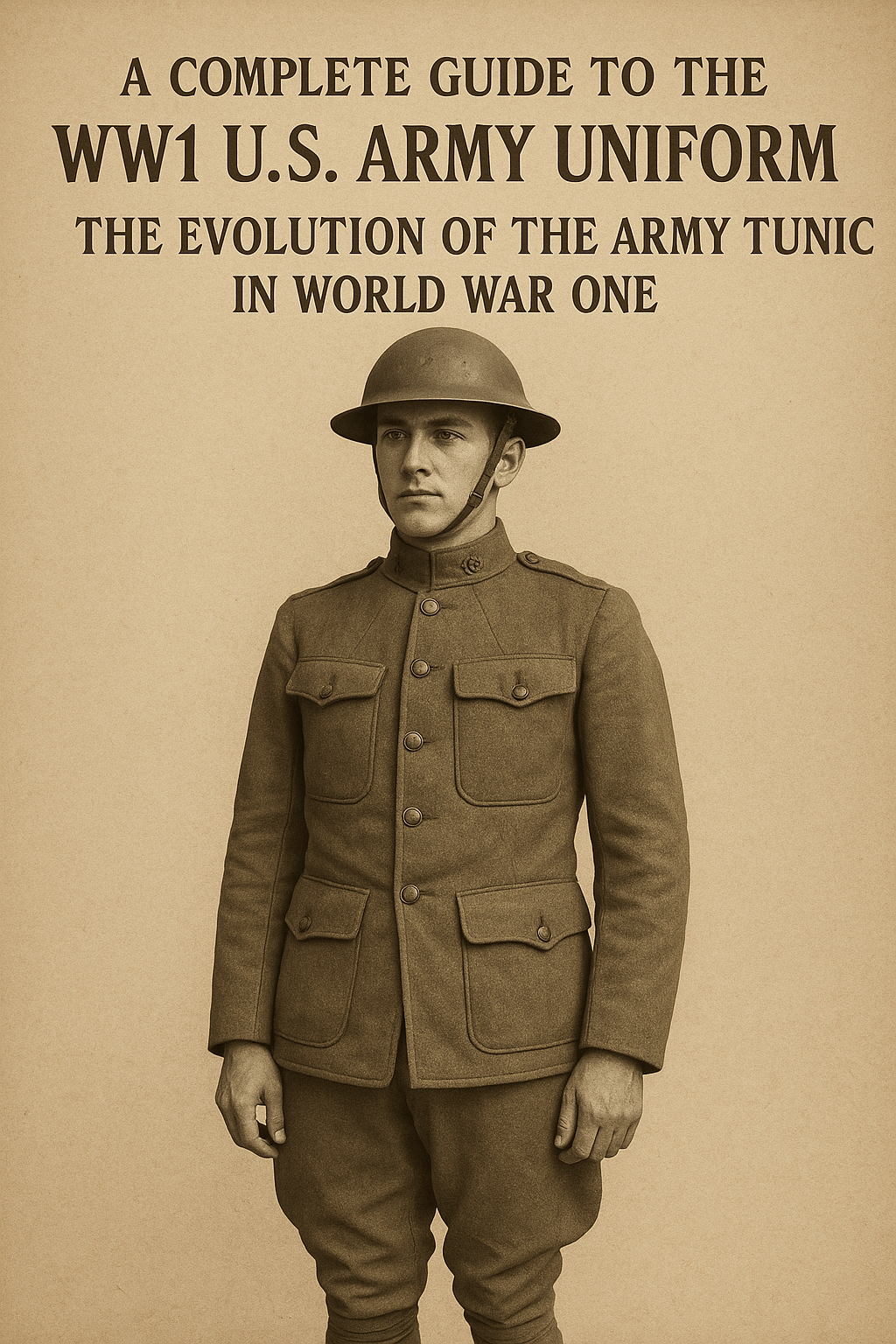
A Complete Guide to the WW1 U.S. Army Uniform: The Evolution of the Army Tunic in World War One
Published on Jul 10, 2025
WW1 U.S. Army Uniform: The Evolution of the Army Tunic
When you think of the iconic image of a World War One American soldier, chances are you're picturing him wearing a woolen army tunic, khaki breeches, and a steel helmet—his uniform rugged, practical, and steeped in history. But did you know that the WW1 U.S. Army uniform went through several evolutions during the war?
In this article, we’ll explore how the World War One army uniform came to be, how it evolved throughout the conflict, and what made the army tunic a central part of the soldier’s gear.
The Origins of the WW1 U.S. Army Uniform
When the United States entered World War One in April 1917, its army was small and largely ill-equipped compared to the European powers. At that time, the U.S. military relied heavily on uniforms developed during earlier conflicts, such as the Spanish-American War. However, the scale and brutality of trench warfare in Europe demanded new and improved uniform standards.
Influences from the Allies
The U.S. Army looked to its British and French allies for inspiration, adopting elements of their uniforms—especially the use of wool, puttees (leg wrappings), and practical tunic designs.
The Army Tunic: A Key Component
Material and Construction
The standard army tunic issued to American troops during WWI was made of olive drab wool, a color chosen to blend into the European terrain. It was relatively thick and heavy—essential for keeping soldiers warm in the wet, cold trenches of France and Belgium.
Key features of the tunic included:
- Four front patch pockets with scalloped flaps
- Brass “U.S.” collar discs and branch insignia
- High, stand-and-fall collar
- Internal lining for comfort
- Shoulder epaulets
Function Over Fashion
The tunic was not about style—it was about survival. It had to withstand mud, rain, ice, and months of hard campaigning. Unlike ceremonial or parade dress, this was a piece of clothing designed for endurance.
Evolution Throughout the War
As the war progressed, so did the uniform. Early tunics were more tailored and tight-fitting, while later models became looser to allow for layering in colder climates and ease of movement.
M1917 vs. M1918 Tunics
The M1917 tunic was the first widely distributed model, followed by the M1918, which included slight modifications based on field experience.
M1917 Features:
- More fitted tailoring
- Buttons made from brass
- Thicker wool
M1918 Improvements:
- Simplified manufacturing
- Lighter wool to reduce overheating
- Some use of cheaper composite buttons
Additional Elements of the WW1 U.S. Army Uniform
Trousers and Breeches
WWI-era American soldiers typically wore wool breeches that tightened just below the knee. These were worn with puttees or sometimes leather leggings to protect the lower legs from mud and debris.
Headgear
The standard helmet was the M1917 “Brodie” helmet, modeled after the British design. Soldiers also had a service cap or campaign hat for non-combat situations.
Footwear
Leather hobnail boots were standard issue, though quality and availability varied. Socks were also woolen, which caused problems with trench foot when wet.
Insignia and Identification
Rank insignia was often sewn or pinned onto the sleeves of the tunic. Unit patches began to be more widely used later in the war, particularly on the shoulder. Dog tags (identity discs) became mandatory by 1917, worn around the neck on a cord.
Uniform Maintenance in the Trenches
Soldiers were issued two sets of uniforms, but laundry was rare. The constant wet conditions meant that uniforms became breeding grounds for lice and trench-related diseases. Soldiers often improvised ways to dry and clean their clothing, though results were inconsistent.
Reproducing Authentic WW1 Uniforms Today
At Paddelaters we specialize in authentic reproductions of WW1 U.S. Army uniforms and army tunics. Each piece is crafted using historically accurate materials, designs, and construction techniques. Whether you're a reenactor, historian, or collector, our gear is made to reflect the true essence of what American soldiers wore during the Great War.
Some of our top-selling items include:
- WWI M1917 U.S. Army Tunic Reproduction
- U.S. Army Wool Breeches
- WW1 Puttees and Leggings
- Steel M1917 Helmets
Why It Matters: Preserving Military History
Understanding the World War One army uniform isn’t just about fabric and stitching—it’s about honoring the memory of those who served. Each uniform tells a story of hardship, bravery, and survival. Wearing or collecting these garments is a way to keep history alive and ensure that the sacrifices of the past are never forgotten.
Final Thoughts
The WW1 U.S. Army uniform, especially the army tunic, represents a pivotal era in American military history. It marked the transition from 19th-century aesthetics to the rugged practicality of modern warfare. For enthusiasts and educators, recreating this uniform accurately is both a challenge and a tribute.
Whether you're building a collection, participating in reenactments, or fascinated by military history, knowing the ins and outs of these uniforms gives you a deeper connection to the past.
